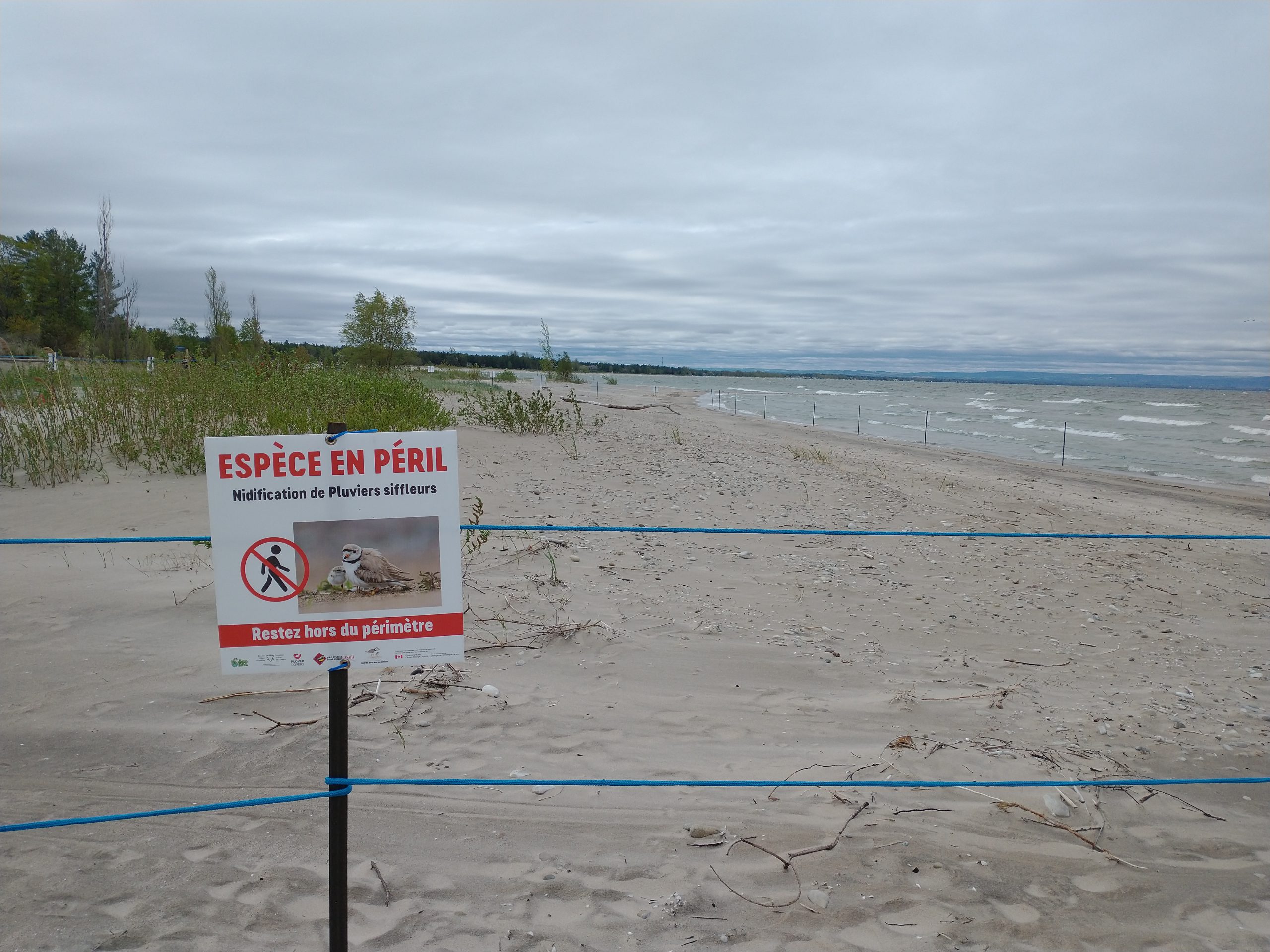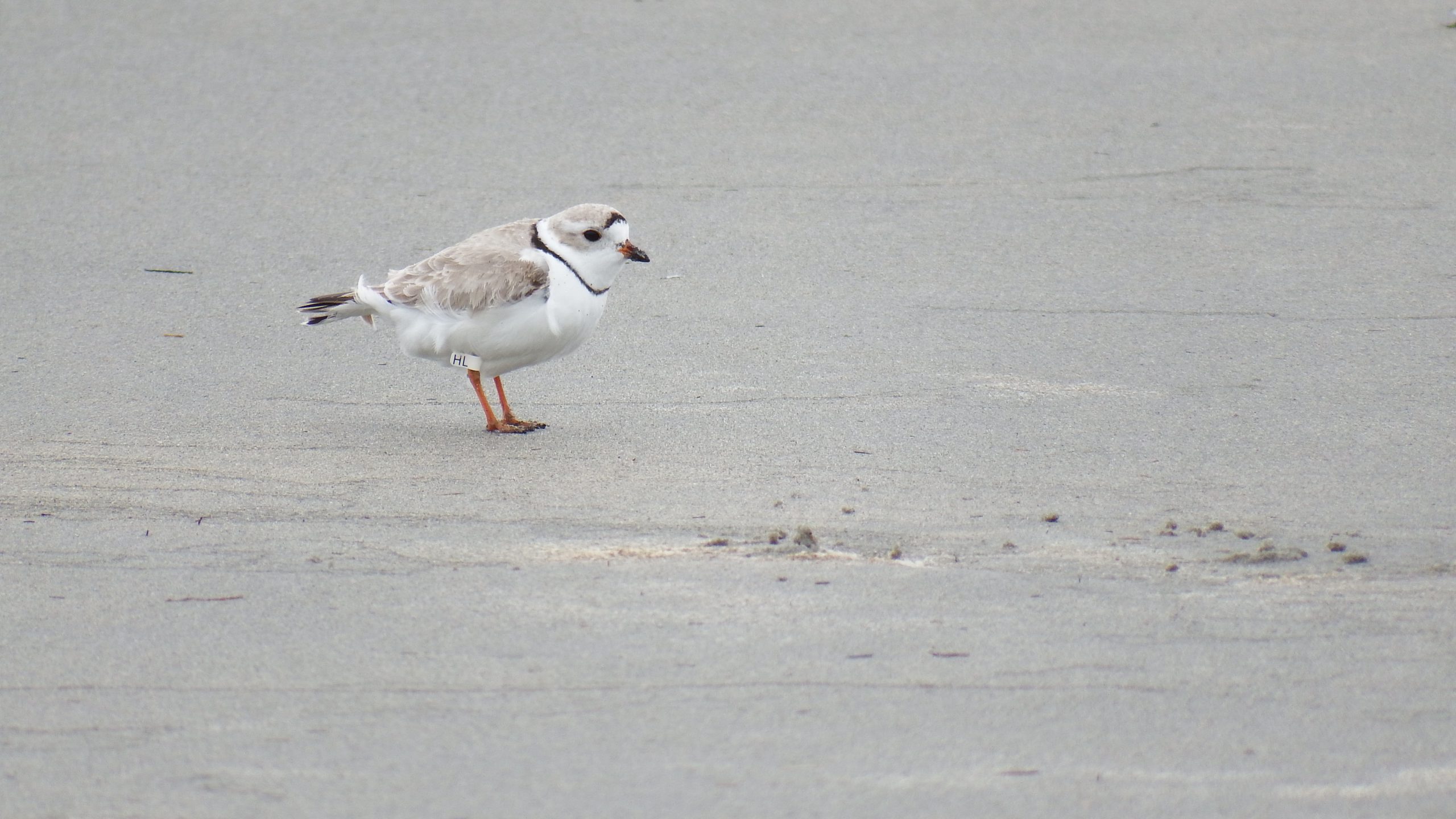Par Sydney Shepherd, technicien – Conservation du Pluvier siffleur en Ontario, Oiseaux Canada
Le Pluvier siffleur est un oiseau de rivage en voie de disparition qui compte trois populations au Canada, soit celles de l’Atlantique, des Prairies et des Grands Lacs. Comme chacune de ces régions présente des menaces et des défis particuliers pour l’espèce, comment parvenons-nous à gérer et à protéger les populations dans trois types de paysages très différents?
Dans le plus récent épisode du balado The Warblers (en anglais), l’animatrice, Andrea Gress (coordonnatrice – Programme de conservation du Pluvier siffleur en Ontario, Oiseaux Canada), rencontre Janet Ng, Ph. D. (écologiste aviaire principale, Water Security Agency [agence de la sécurité de l’eau] de la Saskatchewan) et Laura Bartlett, (coordonnatrice – Programme de conservation du Pluvier siffleur en Nouvelle-Écosse, Oiseaux Canada). Ensemble, elles discutent des différences entre les mesures prises pour la conservation du Pluvier siffleur dans les trois régions.

Pluvier siffleur adulte avec des poussins en Ontario, 2022 Photo : Neal Mutiger

Chercheurs de Pluvier siffleur en Ontario Photo : Oiseaux Canada
The Great Lakes population is the smallest of the three populations. In 2021, it consisted of 74 pairs. Ontario hosted only four of these pairs in 2021. One of the biggest threats this population faces is human disturbance in the form of recreation and habitat degradation. The Ontario Piping Plover Conservation Program uses fencing to encourage beachgoers to give the plovers space, as well as predator exclosures (barriers that allow plovers to come and go, but block predators) to protect the nesting pair and their offspring. The Great Lakes conservation team also bands all of the region’s nesting plovers, which helps researchers track the life history of each bird as an individual and provides insights into the success of various conservation efforts. This also helps with outreach and education initiatives conducted on nesting beaches through the help of volunteers. Each Ontario nesting plover has a nickname and a story, which volunteers share with the public to help others fall in love with this charming species.

Les clôtures encouragent les plagistes à laisser de l’espace aux pluviers. Photo : Oiseaux Canada

Pluviers siffleurs à l’intérieur d’un exclos Photo : Neal Mutiger
Similarly, in the Atlantic region, Laura tells us that a plover wearing a leg flag inscribed with “HL” is lovingly referred to as “Helen Louise” by locals, volunteers, and staff. The Atlantic population of Piping Plovers nests on beaches in Nova Scotia, New Brunswick, Prince Edward Island, Newfoundland, and Québec. Last year, the Atlantic provinces hosted 178 pairs, which is short of the recovery goal of 310 pairs. With lots of coastline to choose from, Piping Plovers don’t run into human disturbance as much as they do in Ontario, but they do have predator issues. While predator exclosures have been successful in Ontario, the Atlantic conservation team doesn’t use them. Staff and volunteers found that predators in this region actually clued into the presence of the exclosures, posing an additional threat to the eggs and adults. Instead, conservation efforts for this population focus on stewardship strategies that encourage beach users to leash dogs, keep vehicles off the beach, and keep beaches clean of garbage to avoid attracting predators.

Une femelle Pluvier siffleur connue sous le nom de ” HL ” ou ” Helen Louise ” Photo : Oiseaux Canada

Garder les chiens en laisse sur la plage aide les pluviers. Photo : Sydney Shepherd
The Great Plains population of plovers visits Manitoba, Saskatchewan, Alberta, and sometimes western Ontario and the U.S. The Canadian portion was estimated to host fewer than 500 pairs in 2016. These plovers see less human disturbance at their breeding grounds than other populations; however, one thing they have to contend with is cattle! Grazing cattle on Piping Plover nesting areas sometimes leave deep hoof print depressions in the ground, which may trap flightless chicks. Conservation initiatives here involve working directly with farmers to help protect nesting habitat where cattle and Piping Plover cohabitate, using tools like cattle fencing and alternate cattle watering systems.
To learn more about Piping Plover conservation, listen to the full podcast episode at thewarblers.buzzsprout.com or anywhere where you get podcasts. To learn more about how you can help Piping Plovers within your local range, connect with your local conservation program. Visit birdscanada.org/pipingplover to learn more.
The Piping Plover episode of The Warblers podcast is part of Wake-up Call, a special series focused on Canada’s most threatened and at-risk bird species. Thank you to Environment and Climate Change Canada for generously supporting The Wake-Up Call.

